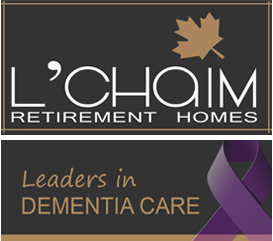


 Menu
Menu
Falls are a danger to a person with dementia, and a cause of alarm to family and professional caregivers. Whether the person lives in the family home or in a care facility, and no matter what stage of dementia the person is living with, falls must—and can—be prevented.
Statistics on falls
According to the World Health Organization, as a person ages, the risk for falls increases due to several factors such as changes in physical function, sensory input, and cognition.
A person living with cognitive impairment is more likely to experience a fall with serious injury than cognitively intact person. A fall could cause a serious fracture, fear, decrease in quality of life, decline in function, and mortality.
Prevention is critical
Given the high risk for falls with this population and the difficulty associated with recovery, fall prevention is critical.
The focus is on reducing antipsychotic medications and preventing falls, as well as other environmental approaches that support the culture change revolution taking place in healthcare.
The role of occupational therapy
Collaborating with an occupational therapist (OT) trained in dementia care is essential to preventing falls. An OT skilled in dementia care will discover the client’s cognitive level and focus on remaining abilities.
With this insight, the OT will develop customized care approaches that will enable care partners to facilitate the client in meaningful occupations: Self-care and leisure.
Task modification
A person living with dementia may experience difficulty carrying out everyday tasks. This does not mean that they are no longer capable of doing things, but that they might need support through task simplification.
If we limit the activities that a person can still do, then we create what is referred to as excess disability. Excess disability can result in negative behaviors and ultimately falls.
To achieve task simplification instead of excess disability, collaboration with an occupational therapist is essential.
OTs specializes in task analysis. Once a person’s cognitive level has been determined, the OT can assist staff in breaking tasks down into achievable parts by creating what we call the just-right challenge. This helps the care partners approach everyday tasks with the appropriate amount of expectation coupled with the right amount of support.
When we meet the client who’s living with dementia with the just-right challenge, we promote the person’s best ability to function. And by setting the person up for success, we minimize the risk for falls, as well as the risk for negative behaviors.
Environmental adaptation
The ability to scan the environment for safety is lost as a person progresses through the stages of the disease process. A person’s desire to be independent and move about freely, combined with a lack of safety awareness and poses a risk for falls.
When we focus on the strengths and the abilities that remain, we must consider how we can promote safety while empowering the person’s desire to move about.
Enhanced communication
As a person progresses through the stages of dementia, their ability to communicate with language diminishes. Their ability to pay attention and process becomes impaired.
When we communicate with a person living with dementia, we must first ensure that we have gained their attention. Then as we speak, we alter our pace to match the person’s processing needs. Rather than speaking in lengthy sentences, we must use short phrases. It’s also important to consider nonverbal communication such as facial expressions and body language.
With awareness of this information, consider how you might approach facilitating a transfer from a seated position. If the client no longer responds to a cue such as “Let’s stand up,” think of how you might communicate more effectively, while tapping into the strengths that remain.
Greet your client, gain their attention, establish rapport, let them know what to expect first, and then provide short, succinct cues step by step; e.g,. “Scoot forward,” “Spread your feet,” “Lean forward,” “Hold here” (as you gesture to the arm rests), “Push up.”
Celebrate the successful performance of the resident, no matter how big or small. It’s important for all of us to know that what we do really matters.